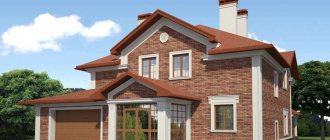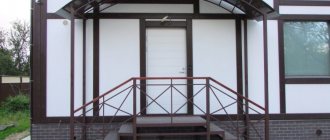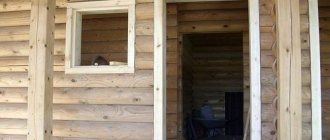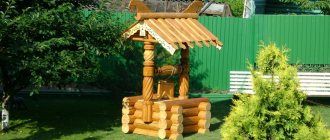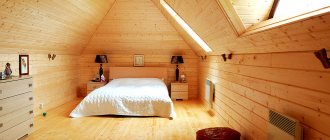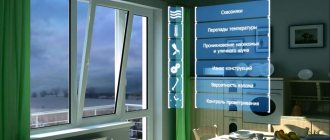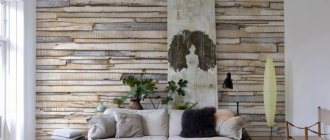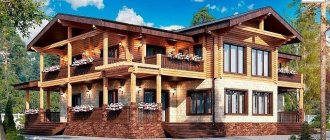Corners for protection can be useful if there are children and pets. The finishing itself consists of several stages. Each of them must be treated with full responsibility and seriousness. Aligning corners is not an easy task when compared to other processes. The corners of the walls must be protected from any damage.
In what cases is it necessary to finish corners in an apartment?
There can be many reasons for using such a building material. At the same time, each one has a different result of their work. But most often this is due to the need to align the corners in the apartment. Unfortunately, builders often encounter such an oversight and have to carry out an additional stage of renovation to make the room visually complete.
Decorative corners help solve these problems.
To make the correct geometric shape, you need to prepare the working surface. To do this, the previous covering is removed: wallpaper, whitewash, plaster. Next, the builders carry out treatment in the form of spraying with an antiseptic and cover it with a new layer of primer.
The corner protects the surface from mechanical damage, allows you to hide some flaws in the finishing, create a transition from one material to another, and cover the ends of tiles or panels.
Using a special corner, which is sold in every professional hardware store, the required shape is set at the corners of the walls. At the same time, time is spent measuring the deviation and evenness of the resulting surface. At the end of the work, special metal fasteners are glued to the corner and additionally treated with a new layer of finishing.
There are many options for using corners in the interior.
After performing minor construction manipulations, the angle is completely leveled and the desired visual effect is achieved. In difficult cases, absolutely any finishing materials can be used: from plastic panels to plasterboard elements.
Some difficulties arise when finishing corners other than 90°; this requires special, so-called. folding, corners.
In addition to the purpose of leveling the surface, these construction works are carried out to decorate the surface. A wide range of materials allows you to play up corners and make them real elements of the overall interior concept.
They can be used to decorate both external and internal corners of walls.
Decorating corners in an apartment involves the use of various decorative elements. This allows you to achieve completeness and aesthetic appeal. In addition, such manipulations are used to save space.
Corners can serve as niches for built-in furniture or be completely cut out to create seating areas.
Installation and fastening methods
Installation of plastic elements:
- The construction angle measures the angle of deviation.
- A putty mixture is prepared with the most viscous consistency.
- Apply the solution with a spatula, in a small layer, leveling the corner part, creating a rectangle.
- A small perforated plastic corner is applied, dries, and then covered with a finishing layer.
- After complete drying, it is sanded with a simple abrasive mesh.
Another way:
- You need to prepare the surface, clean it of debris, make sure it is smooth and without humps. It is necessary to remove all the old finishing in the place where the corners are installed (wallpaper, paint, plaster)
- A pair of plastic corners are mounted on the surface.
- A step of 3-5 centimeters is measured and glue is applied in a dotted line to the surface of the corners.
- As the glue becomes more viscous (you can see this in the instructions itself), you need to attach plastic elements to the corner to protect the outer corner.
- The entire structure is fixed with masking tape.
These methods are also suitable for installing metal corners of the model.
The influence of using corner finishing in an apartment
Different options for finishing corners are accompanied by corresponding purposes. So, if there are small children or animals in the apartment, then the corners are treated for additional protection. A sharp impact can deform the desired shape and spoil the interior.
Their use in this case protects the end of the slope from damage and prevents the wallpaper from peeling off, which quite often happens on external corners.
Fans of unusual design prefer non-standard design of corners. This could be built-in furniture or arrangement of additional space. Various building materials can be used as finishing to influence the interior.
Great idea for saving space in your hallway.
How to cut a corner
The standard length of the workpieces is from two to three meters, and almost always they have to be cut to obtain the required pieces. To do this, use a tool suitable for cutting a particular material.
Wood, metal and plastic are cut with a hacksaw with an appropriate blade.
To cut a thin plastic corner, use a sharp knife or scissors, adjusting the cuts with fine sandpaper.
Protect corners from damage
For protection, special protective corners are used. They differ from each other not only in the method of fastening, but also in the place of application.
In addition to technical, the corner profile also carries an aesthetic load.
The range of such products includes the following variations.
- By visual differences. Protective corners come in different shapes and shades, which allows them to combine two functions at once: aesthetic and protective. This way you can choose options to match the walls, doors, and baseboards. For a more unusual design, you can use different textures and eye-catching colors.
- According to the material used. A cheaper option is a plastic product. It comes in different colors, textures and even models with a transparent base. Metal options are more for protection than aesthetic appeal. To add a special touch to the room, you can use wooden options. In construction markets there are corners made of different types of wood and with different surfaces.
- Form. According to this criterion, two types of products are distinguished: sharp and round. You can choose any shape of protective corners. The parameter does not affect the main function. It's more a matter of aesthetic appeal.
- Dimensions. You can choose completely different dimensions. It all depends on the scale of the room and the walls as a whole. The largest option is considered to be a product measuring 10mm x 10mm x 2.75 m. The minimum size is 5mm x 17mm x 2.5m.
The use of a white corner completes the window opening.
Wood and polystyrene foam
Wood is an environmentally friendly material, without impurities in its composition. Safe to use in children's rooms.
Wooden corners do not have good ductility, and often this characteristic is necessary in a certain case.
The only drawback is that such corners can become deformed from moisture and sudden temperature changes. If the battery is located in the very corner, then profiles made of wood of any type cannot be installed there.
Wooden corners are often installed with simple glue or liquid nails; they are fixed well. Their only drawback is their rather low level of wear resistance.
Corners made of polystyrene foam. This option is not only reliable, but also very profitable. Low price. Installation is quick, also with glue or other variations. The main advantage of the material is that it does not absorb any dirt. You don't need to take care of it. Expanded polystyrene is easy to paint, you can constantly change the style of the corner. Moisture resistant.
The only downside is that they are made on the basis of chemical compounds, so it is not recommended to use them in a children's room.
Visual impact on the interior
The use of corner finishing will achieve several goals at once:
- alignment of the angle for the visual perception of a flat surface;
- performing not only an aesthetic function, but also a protective one;
- reducing contamination in hard-to-reach areas of the ceiling and floor;
- wall decoration;
- saving space and installing additional furniture;
- improving doorways, window openings and joints between panels.
A profile that contrasts with the slope and wall decoration can create the desired color accent or become an independent original interior detail.
Depending on the material used, different decoration options can be achieved. Stone decoration will make any room unusual. Plastic materials will help achieve completeness and simplicity.
Silicone ones can perfectly complement children's rooms with their abundance of colors and high protective functions.
Designers prefer not to refine the corners, but to remove them. Thus, additional niches appear in place of the usual room walls. They are great for saving space, because other furniture and even household appliances are inserted there.
This “trick” in the interior can be used in bedrooms for bookshelves, in the hallway for shoes and in the kitchen for appliances.
Bold designers practice getting rid of corners. Instead, they will equip an additional recess where you can place:
- interior items: vases, figurines, figurines made of ceramics or glass;
- a relaxation space where you can add a reading table or easy chairs;
- pet houses;
- small home libraries or shelves with magazines.
The corner of the room can be transformed into a practical shelf for books and souvenirs.
Additional Information! In addition to the above, recesses can be used for other purposes. Fantasy knows no bounds and you can come up with any options for convenience and comfort in the apartment.
Plastic covers
Everyone who has plastic windows installed has seen similar details - they frame the window opening. The scope of application of such elements is not limited to windows - they can be used to design joints on door slopes, framing interior doors and in other similar places. Plastic products are very cheap, easy to process and come in a variety of colors. There is only one drawback - they don’t look very attractive. However, the low price and ease of working with plastic compensate for all the shortcomings.
Materials for finishing corners in an apartment
Decorating corners in an apartment with decorative corners is not an easy process. In this case, it is worth paying due attention to the choice of material. The general concept of the result depends on this.
The material of the corner determines its appearance, technical characteristics and scope of application.
Plastic panels
Such fittings are an inexpensive decorative material for finishing polyvinyl chloride (PVC). The building material is resistant to alkali and acids. Light weight greatly simplifies the installation process. Also, PVC panels do not require maintenance.
The palette of monochrome corners contains approximately 30 shades.
If cracks or deformations appear, you can easily replace the parts with new ones. At the same time, you will be pleased with the affordable price. A large range of products will allow you to choose the right dimensions, shades and even shape. Key advantages include moisture resistance and lightness.
If necessary, the white profile can be repainted in any other color.
Transparent silicone corners
An attractive and flexible material that has found its application in finishing bathroom corners. High resistance to water allows the product to be used in the humid environment of a given room. At the same time, the corners themselves are flexible, which allows them to be attached even on uneven surfaces.
If there is a need to protect the corner and preserve the wallpaper pattern, apply a silicone corner profile.
The main disadvantage is a weakness for household chemicals. Therefore, the process of caring for this protective product becomes more complicated. For cleaning, use non-aggressive chemicals or a regular damp cloth.
This material is quite soft and is well suited for rooms where small children are often present, because... reduces the risk of a child being injured by hitting a corner.
Builders prefer transparent silicone corners due to their ease of installation. The structure is attached by removing the protective film that covers the adhesive base. No additional equipment or mixtures are required for installation.
Decorative rock
This material will always remain a leader among other building materials in terms of aesthetic appeal. This option for decorating corners in an apartment will help create a special atmosphere and emphasize the unusual design solution.
It is best to decorate corners in an apartment with flexible stone.
This material is relevant for owners of large apartments. Since the decorative stone itself takes up quite a lot of space. In a small room, its installation is considered irrational.
Decorative stone in the corners will look very beautiful.
Key features include:
- strength;
- choice of different textures and shades;
- there are smooth and rough surfaces;
- resistance to physical influences;
- the opportunity to turn any design ideas into reality.
The use of stone is appropriate in apartments with a large area.
Drywall
A universal material that is widely used for finishing arches, shelves, ceilings, walls and any openings. The fragility of the material does not allow installation for the purpose of decorating a room. During installation, it is necessary to add an additional construction stage, which includes fixing the structure with putty or other mixtures.
Drywall is accessible and affordable.

